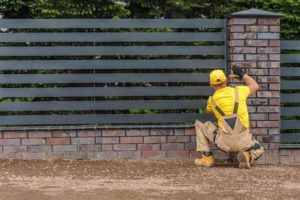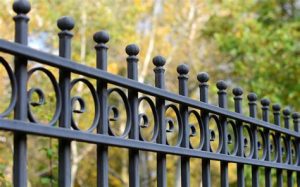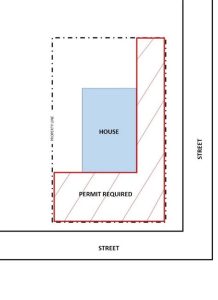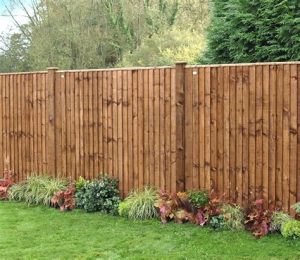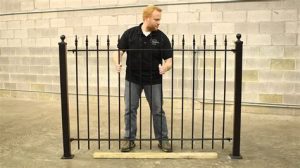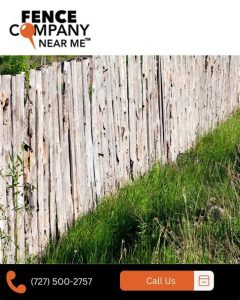Explore essential tips for overcoming installation challenges, selecting materials, prepping ground, adapting to cold weather, and ensuring long-lasting durability for your projects.Installing a fence in winter might seem like a daunting task, but with the right preparation and knowledge, it can be successfully accomplished. As temperatures drop and snow blankets your yard, unique challenges arise that can complicate the installation process. From frozen ground to choosing appropriate materials, understanding these factors is crucial for a smooth project. In this blog post, we’ll explore the challenges of winter fencing installation, provide tips for selecting the right materials, and share techniques to ensure your fence not only stands strong against the cold but also remains durable for years to come. Whether you’re planning a new fence or need to repair an existing one, our guide will help you navigate through the complexities of winter weather conditions and keep your fencing goals on track. Let’s dive in and prepare you for a successful winter installation!
Understanding the Challenges
Installing a fence during winter weather presents several challenges that can affect both the installation process and the overall outcome. Cold temperatures, frozen ground, and snow accumulation can complicate the installation process and introduce specific risks that need to be considered.
One of the primary obstacles is the frozen ground, which can make it extremely difficult to dig post holes. Standard digging equipment may struggle in these conditions, leading to potential delays and increased labor costs. Additionally, frost heave can occur, where the ground expands and contracts due to fluctuating temperatures, potentially misaligning your fence.
Another challenge is ensuring that materials used for fencing—like wood and vinyl—remain viable for installation. Cold can exacerbate issues like cracking or splitting in wood or making certain materials brittle.
Choosing the Right Materials
When it comes to installing a fence during winter weather conditions, one of the most critical factors to consider is choosing the right materials. The materials you select will directly affect the installation process, maintenance, and longevity of the fence in harsh winter climates.
Firstly, consider using vinyl fencing. This material is known for its resilience in cold temperatures and resistance to warping or cracking. Unlike wood, vinyl does not absorb moisture, which means it won’t swell or rot in snowy weather. Additionally, vinyl fences are virtually maintenance-free, making them a practical choice for winter installations.
Another excellent option is metal fencing, such as aluminum or wrought iron. These materials are incredibly durable and can withstand severe weather conditions, including heavy snow and ice. Furthermore, they offer a sleek look that can enhance your property’s aesthetic. However, it’s essential to ensure proper treatment against rust, especially if you live in areas where salt is used on roads during winter.
Ultimately, the materials you choose should align with your specific needs and local weather conditions to ensure that your fence not only meets your aesthetic desires but also stands the test of time despite winter’s challenges.
Preparing the Ground for Installation
When it comes to installing a fence, preparing the ground is a crucial step that can significantly impact the durability and stability of the structure. In winter weather conditions, this task can become more challenging. Proper ground preparation is necessary to ensure that the fence posts are secure and the overall installation runs smoothly.
Before you begin the installation process, assess the area where you plan to put up the fence. Ensure that the site is cleared of any debris, snow, or ice that could interfere with digging and laying the foundation. This may require shoveling out snow or removing frozen ground. If the ground is particularly hard or frozen, consider using a post hole digger or an auger designed for cold weather conditions.
One common method to aid in ground preparation is to use heat lamps or torches to thaw frozen ground sections. Be cautious and ensure you follow local safety regulations and guidelines to prevent any fire hazards. Having a well-prepared site will not only make installation easier but also enhance the long-term durability of your fence.
Adapting to Cold Weather Techniques
When it comes to installing a fence during the winter months, understanding the specific techniques required to adapt to cold weather is crucial. Frost and freezing temperatures can create unique challenges that must be addressed to ensure a successful installation.
1. Timing is Key: Choose the right time during the winter season to start your project. Early winter, when the ground is not fully frozen, may allow for easier digging and placement of fence posts. Aim to work during the warmest part of the day, when temperatures are generally higher.
2. Heated Equipment: To combat cold weather, using heated equipment can make a significant difference. Consider utilizing heated hoses for water-based post-setting materials or tools that can withstand cold temperatures. This can prevent materials from freezing and help ensure a smoother installation process.
3. Proper Insulation: After the fence is installed, proper insulation is essential for maintaining the integrity of the fence. Use insulation wraps around posts and apply mulch or other insulating materials around the base to prevent freezing and thawing, which can cause instability.
| Technique | Description |
|---|---|
| Timing | Select the warmest parts of the day for installation. |
| Heated Equipment | Utilize heated tools and hoses to combat freezing. |
| Proper Insulation | Insulate around posts to maintain stability. |
By implementing these techniques, you can effectively adapt to cold weather challenges and ensure your fence installation project is successful, even during the chilling winter months. Remember to always prioritize safety and consult local guidelines to navigate any additional winter-specific obstacles that may arise during your installation process.
Ensuring Long-term Durability
When it comes to installing a fence, ensuring long-term durability is a paramount consideration. A fence is not just a boundary; it’s an investment in your property that can enhance both its aesthetic appeal and value. To guarantee that this investment stands the test of time, it’s essential to consider several factors when selecting materials and installation techniques.
First, choosing high-quality materials can make all the difference. Whether you opt for wood, vinyl, or metal, each material comes with its own characteristics and durability levels.
| Material | Durability | Maintenance |
|---|---|---|
| Wood | Moderately Durable | High |
| Vinyl | Highly Durable | Low |
| Metal | Highly Durable | Medium |
In addition to materials, the installation process is crucial. Proper installation techniques, including deep post holes, adequate securing methods, and timely sealing, can greatly improve the longevity of your fence. Additionally, being proactive about maintenance, such as regular inspections and timely repairs, will help in protecting your fence against harsh environmental conditions.
Finally, don’t forget the influence of weather conditions on your fence’s durability. Regular exposure to elements like rain, snow, and direct sunlight can affect the lifespan of your fence. Therefore, it’s wise to consider weather-resistant finishes and practices that can shield your fence from potential damage, ensuring you get the best return on your investment.
Frequently Asked Questions
Is it possible to install a fence during winter?
Yes, it is possible to install a fence during winter, but certain considerations must be made regarding ground conditions and temperature.
What challenges might arise when installing a fence in winter?
Challenges include frozen ground that can make digging post holes difficult, snow cover obstructing the site, and cold temperatures affecting materials like concrete.
What type of fence is best for winter installation?
Vinyl or metal fences are often preferred for winter installation due to their durability and resistance to weather conditions.
How does freezing temperature affect fence installation materials?
Freezing temperatures can hinder the curing process of concrete, which is essential for setting fence posts securely.
Are there any precautions to take when installing a fence in winter?
Yes, it is crucial to monitor weather forecasts, prepare the ground by clearing snow, and use materials designed for cold-weather installation.
Can installing a fence in winter save costs?
Yes, winter may offer lower labor costs due to decreased demand, making it potentially more cost-effective to install a fence during this season.
Should I hire a professional for winter fence installation?
Hiring a professional can be beneficial, as they have the experience and tools to handle the specific challenges posed by winter conditions.
